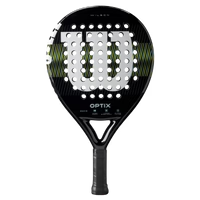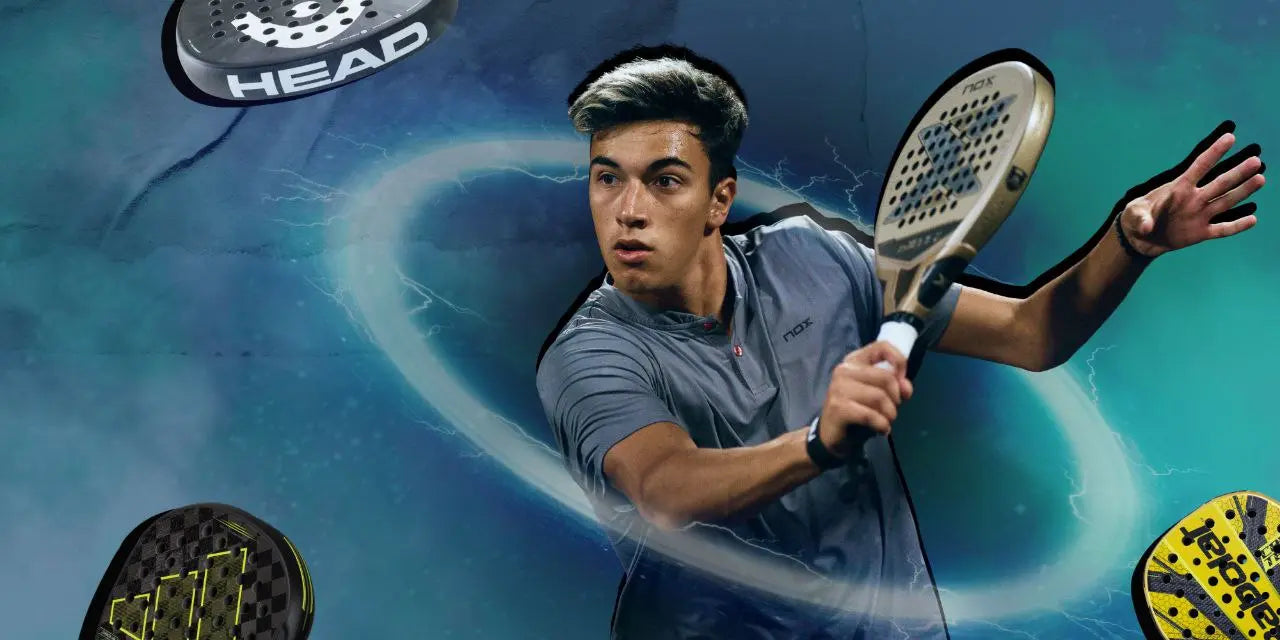Whatever your level, we have everything you need at Padelusa.com to help you make the right decision when buying a racket. If you're about to buy your very first racket, keep in mind that this decision can make a huge difference—it can help you improve faster, avoid injuries, and, most importantly, enjoy the game. Let's guide you in making the right call!
What kind of beginner are you?
Not all beginners are the same. If you’re completely new to racket sports, go for a forgiving, comfortable and easy-to-handle racket—that’s exactly what beginner-friendly models are designed for!
But if you’ve played tennis, squash, pickleball, or any other racket sport, you might want a bit more power and precision—and that’s totally fine. In that case, you can aim for a model designed for more advanced players.
And if you were an elite-level player in another racket sport? You might already be ready for a pro model!
Racket shapes: what’s the difference?
Let’s keep it simple (if you want all the details, check our post about hybrid shapes here). Padel rackets come in three main shapes:
- Round – The easiest to control, with a big sweet spot. Ideal for beginners, defensive players, and those looking to protect their joints.
- Teardrop – A balance of power and control. A great choice if you’ve played racket sports before or have an all-around playing style.
- Diamond – Designed for power and precision but harder to control. Not beginner-friendly—unless, of course, you already have years of racket sport experience.
Don't underestimate weight and balance
A racket’s weight and balance have a huge impact on how it plays. A heavier racket can generate more power, but it also requires more strength and experience. As a beginner, it is best to start with something light and easy to maneuver—you’ll develop your technique faster and avoid unnecessary strain.
Balance also plays a key role:
- Head-light – More control, easier to maneuver. A solid choice for beginners.
- Even balance – A mix of power and control. Another great option.
- Head-heavy – More power and precision, but harder to control. Not ideal for beginners.
Keep in mind that balance is closely linked to shape—for example, round-shaped rackets are normally head-light, though there can be exceptions.
Aim for comfort and tolerance
Your first racket should be comfortable, not something that strains your wrist or elbow. Look for:
- Soft foam cores – Absorbs vibrations, making it easier on your arm.
- Fiberglass surfaces – More flexible and forgiving than carbon fiber.
If you are a true beginner, options like Babolat Contact or Head Vibe, with their soft cores and faces, are great choices.
Should you get a racket made for pros?
Probably not. High-end rackets are great—if you know what you’re doing. But they tend to be stiffer, heavier, and less forgiving.
As we said at the beginning, if you already have a solid racket sport background, feel free to choose whatever racket appeals to you. But if you have only spent a few hours on a padel court, respect the basics: start with something simple and upgrade later once you understand what suits your game.
Conclusion
As a true beginner, your first padel racket should make the game easier, not harder. Go for something light, comfortable, and easy to control. You can always switch to a more advanced model later—right now, the goal is to have fun and improve while staying injury-free!
 Ir directamente al contenido
Ir directamente al contenido











